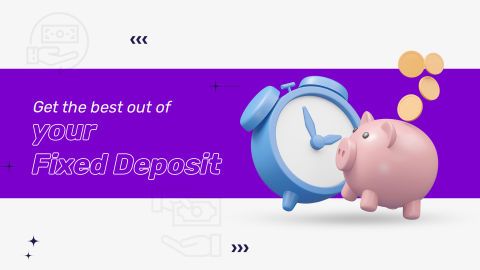The power of compounding refers to the ability of an investment to generate earnings not only on the original principal amount, but also on the accumulated interest earned over time.
There are multiple investment options where the power of compounding is used and the interest earned is credited on your invested funds. These investment plans typically feature a clear compounding period, such as yearly, monthly, or even daily, allowing you to take advantage of compounding as needed. One of these investments is fixed deposit. Before we learn about how power of compounding impacts fixed deposit, let us know about the power of compounding.
Looking for steady compounding returns?
Open a Bajaj Finance Fixed Deposit and watch your savings grow with attractive interest rates up to 7.30% p.a. Open FD.
What is the power of compounding?
The power of compounding works by multiplying your wealth tremendously. To speed up the process of earning profits, it adds the profit made back to the initial sum before reinvesting the complete total.
In essence, the power of compounding is the act of "adding interest on interest," meaning that the amount of money you invest will result in returns from both the initial capital and the collected earnings from earlier compounding periods. So, the force of compounding eventually aids in the gradual growth of your wealth.
For example, if you invest Rs. 1000 and earn a 10% annual return, in the first year you will have Rs. 1100. If you leave the Rs. 100 of interest earned in the account and continue to earn 10% per year, in the second year you will earn Rs. 110 (10% of Rs. 1100) in interest. By the end of the second year, you will have Rs. 1210.
This process continues, with the interest earned in each period also earning interest in the following periods. The longer the investment is left to compound, the greater the potential returns.


